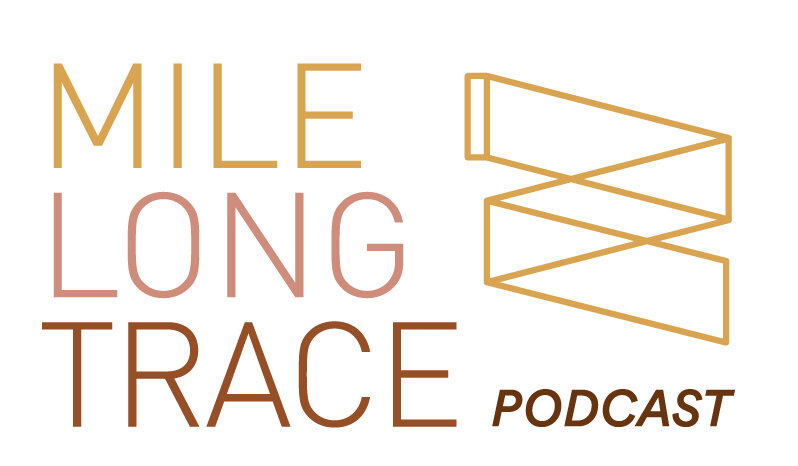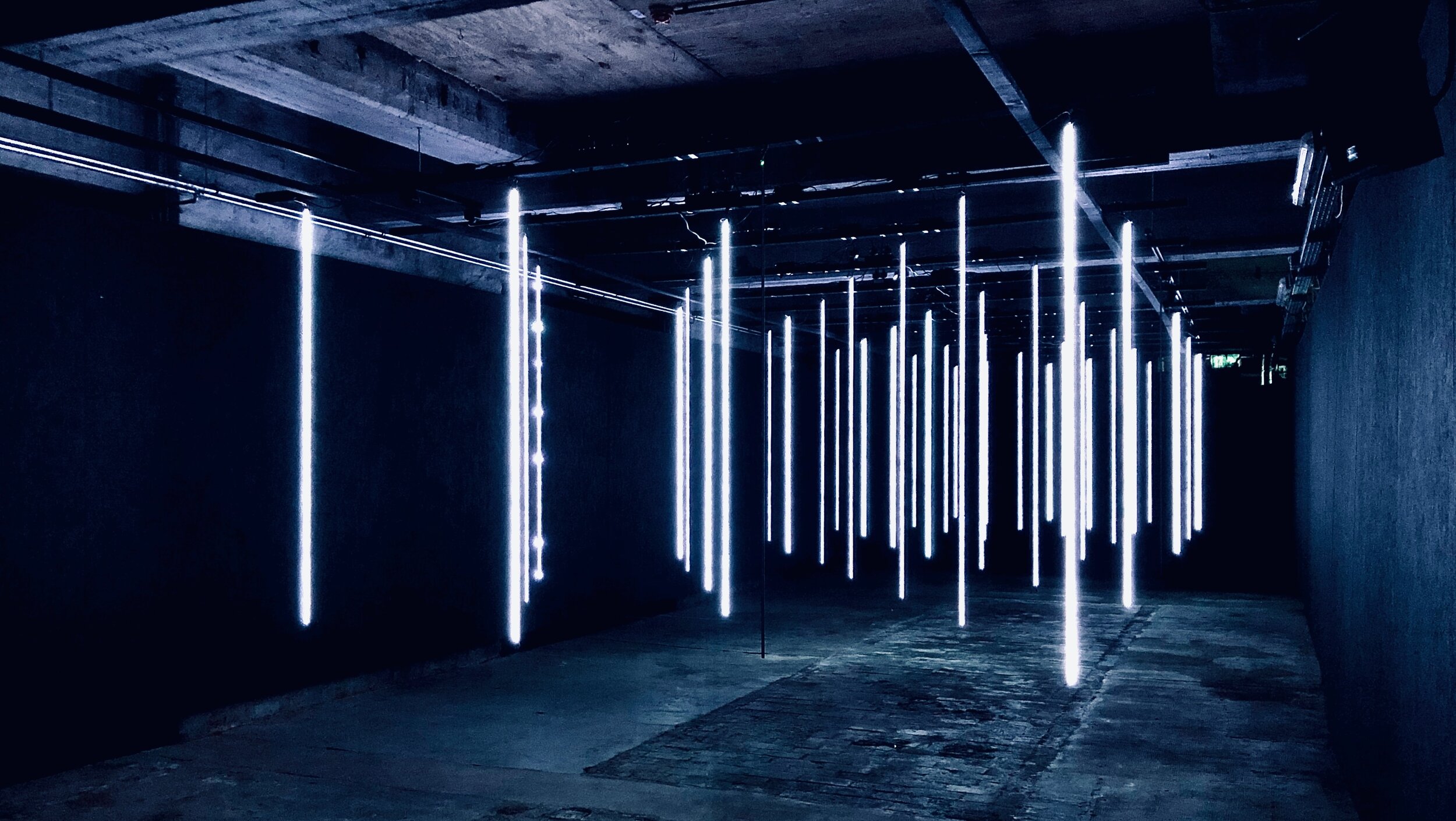Unpacking how UV light can safely be used to clean the built environment
“At this the time there is not enough research and education to the public on the difference and effectiveness of UVA, UVB or UVC. The key is to really understand which nanometer range of UV the source is emitting.” - Jesse Smith
“I think UV lighting strategies is a really important conversation to have with clients in light of everything that's going on in the world right now. However, I think the science needs to be stronger in terms of application. My concern is the ads for UV light that kill COVID. We are trying to stay away from eradicating surfaces because of the potential to expose humans.” - Kaylene Campbell
Overview
Unpacking the pros and cons of UV lighting as a viral treatment in the built environment
In order to minimize the viral spread in the built environment, designers across the world are exploring a vast array of strategies from space planning, to finishes to lighting. In today’s episode we are going to unpack UV lighting to understand the pros and cons of introducing it into mainstream built environments. UV has traditionally been used in health care applications such as surgical exam rooms to remove virus from surfaces. As designers explore how this technology translates to other market sectors we will unpack:
Effectiveness of UV lighting as a viral treatment
Safety concerns with using UV in public spaces
Safe ways UV lighting can be introduced into interior environments
Clients interest in UV lighting and predictions for technology advancement
Guest Summary
Jesse Smith is a Lighting Studio Team Lead and Senior Lighting Designer at Glumac Engineering
Jesse’s background started in Communication, that lead him to Parson’s School of Design where he received an MFA in Architectural Lighting Design
He is Lighting Certified with National Council on Qualifications for the Lighting Professions (NCQLP) and a Board Member of Illuminating Society of Engineers (IES)
Active member in local IES and IALD chapters helping promote better lighting through education
Projects he has worked on span the globe in a spectrum of project types from medical facilities to higher educational institutions to hospitality projects
Jesse has extensive experience in exploring new lighting, control and daylighting technology
Kaylene Campbell is a Lighting Designer at Glumac Engineering
She has an BFA in Interior Designer which allows her to communicate lighting design intent and technical expertise fluently with architectural teams
She has a deep background as a client manger which enable her to understand clients’ needs and team coordination
She is currently a member of IIDA and Board Treasure of IES
Projects she has worked on span the United States in a spectrum of project types from winery tasting rooms, mixed use development, biotechnology facility to multifamily housing projects
Kaylene’s background in sustainability has enabled her to work on projects that utilize Resilient Design and LEED strategies
Jesse Smith, Lighting Designer at Glumac Engineering
Kaylene Campbell, Lighting Designer at Glumac Engineering
Pro Tip: Concealing UVC light sources behind louvers avoids unintended occupant exposure
Pro Tip: Do your homework and really understand the light source, the nanometer range and the application
Design Tip: The more porous the surfaces the more exposure it generally needs, which incidentally will make it fade more. The material palette and the lighting will need to work together.
What is UV Lighting and how does it work?
There are three areas of UV Lighting: UVA, UVB and UVC. They work closely together and each have pros and cons. The sun produces all three UV’s and as it passes through the ozone we see:
95% is UVA
5% is UVB
UVC is blocked by the ozone
If we had a higher concentration of B, then there would be even more instances of skin cancer. Currently, when we talk about UVC being used in the built environment, it is pretty much all man made.
UVA
Wave Length: Ranges from 400 nanometers down to 315. It is outside of the visual spectrum on the lower end. On the higher end there is some visible light which is known as black lights.
Effectiveness at Cleaning: There are some products out there that have some disinfecting properties. It is generally seen as much healthier for humans.
Health Concerns: It begins to mess with your cornea when one is exposed to it for long periods of time. It can cause short term discomfort in the eyes. Currently there are no known lasting effects on the body.
UVB
Wave Length: Ranges from 280 nanometers to 315 nanometers.
Effectiveness at Cleaning: Sunlight is very effective at disinfecting pathogens but once it passes through glazing it gets filtered out.
Health Concerns: Can lead to skin cancer from prolonged exposure.
UVC
Wave Length: Ranges from 100 nanometers to 280.
Effectiveness at Cleaning: Is the most effective and is what the industry is currently looking further into.
Health Concerns: There is a wide enough range with different levels of impact depending on the level of nanometers.
Germicidal UVC – 254 nanometers are harmful to human skin or the eye. It can cause reddening, blotching or bruising on the eye and skin.
Far UVC – 222 nanometers do not have any known impacts to the skin at this time. Currently researchers are studying the long-term effects of Far UVC
What are the unintended consequences of introducing UV as a viral treatment in to the built environment?
I think it's a really important conversation in light of everything that is going on in the world right now. But I also think the science needs to be stronger in terms of application. My concern is the ads for lights to kill COVID. We are trying to stay away from eradicating surfaces because of the potential to expose humans.
In the 1940s, at lot of research was put into UVC lighting to combat tuberculosis. It was found to be highly effective in hospitals and schools to eradicate the spread. Currently we are finding it has the potential to combat COVID-19 but we want to balance that with occupant overall long-term safety.
What are ways UV lighting can safely be introduce into the built environment?
There are two methods currently being explored:
1. UVC lighting inside mechanical systems to clean the air. Whether it's UV light in an air duct, which can have all sorts of problems because the air is moving very fast and may not clean things very effectively or UVC in the air handling unit itself. It's self-contained, fairly clean, and easy to maintain. and avoids contact with building occupants.
2. Upper room disinfection, places a light fixture in the upper 3’ of a room. The theory is the fixture cleans the upper couple feet of air in the room. The higher the ceilings the better it works. Generally, with a 10-foot ceiling we would put a fixture at eight feet. It would only emit light in that upper area. As long as you have good air circulation with a ceiling fan or a mechanical system, it will circulate the air in the room and disinfect everything that's above that eight feet.
What do the UVC fixtures look like?
Most fixtures were designed 60+ years ago. The are good at what they do but the profile and aesthetic is out of date. The fixtures have larger louvers with linear fluorescent behind and they are inefficient because of how much has to be shielded to avoid an occupant looking into them. In order for the UV to work the fluorescent lamp needs to be exposed. Acrylic lenses and other translucent materials would block the UV properties needed. Some manufactures are currently looking at impervious materials that will not degrade over time.
What does the Color Temperature and Color Rendering Index look like on UVC fixtures?
Color Rendering Index does not apply in this application, it is very low/poor.
Color Temperature – the wavelength that works for UVC treatment is in the blue/green wavelength. In UVA (near UV at 400-410 nanometers) there are methods to make it slightly whiter. It is a very low dose of UVA so occupants can interact under it but it is not as effective at treating bacteria. If we talk about that upper room method with UVC, you are going to have a little bit of that color on your ceiling unless your ambient light is designed to produce a white light to wash it out. This approach will not be completely unnoticeable but will be more attractive.
Are off the shelf UV light treatment options safe and effective?
At this the time there is not enough research and education to the public on the difference and effectiveness of UVA, UVB or UVC. The key is to really understand which nanometer range of UV the source is emitting. Most are saying UV without defining the wave length which is most likely going to be a UVA such as a black light. It has some germicidal effects but has not been proven to kill COVID-19 at this time. If it is a UVC it is going to be at the higher nanometer which is almost right at 280 which could have some serious health concerns. At this time LED’s are not able to produce UV wave lengths. Anything with a LED as the light source will not be effective.
What are conversations you are having with your clients in regards to UV lighting in an interior space?
Clients are asking about UV lighting while trying to weigh the sustainable attributes of operating a building. They want to understand if it will be safe, effective and sustainable short term and long. At this time, we are having the conversation in the schematic design phase but the research and products need further development to be safe and effective in mainstream building environments. Questions we are asking are:
-Do we know enough to actually integrate that design now into buildings?
-What are the clients long term goals? How can we align those with other solutions?
-Will occupants be in the space and for how long during treatments?
-Could we disinfect the air instead of the surfaces?
How does UV lighting work on different interior surfaces?
UV lighting can impact the surfaces in our indoor environments from fading to material degradation. The more porous the surfaces the more exposure it generally needs, which incidentally will make it fade more. When I saw the studies on what UV is doing to materials, my first thought was, the double rub test is not going to be enough anymore. It has to be the dual question, if you're anticipating having this new technology as part of an office environment, products will need to have an additional level of certification that will have to go above outdoor UV coatings currently on the market.
What are your predictions for UV lighting moving into other markets and staying?
I think there is a place for UV in all types of projects. Our recommendation with clients is to avoid the “wholesale” approach to UV in open offices. It is currently not a viable option and potentially unsafe. We are focusing in on areas that are the larger concern such as a restroom and elevator cabs. Since we don't have a lot of LED in this part of the spectrum, we are using traditional light sources like fluorescent which is less efficient. It feels like they are taking a step back 10 years from where technology has advanced. We are finding when we try to solve for viral transmission, we should make sure and uphold other sustainability attributes such as energy efficiency.
Credit
Branding & Graphic Design work by Andrea Schwoebel https://www.andreaschwoebel.com/
Head shot provided Jesse Smith and Kaylene Campbell
Photo by Natalya Letunova on Unsplash
Photo by Rich Smith on Unsplash
Photo by Anton Rhein on Unsplash






